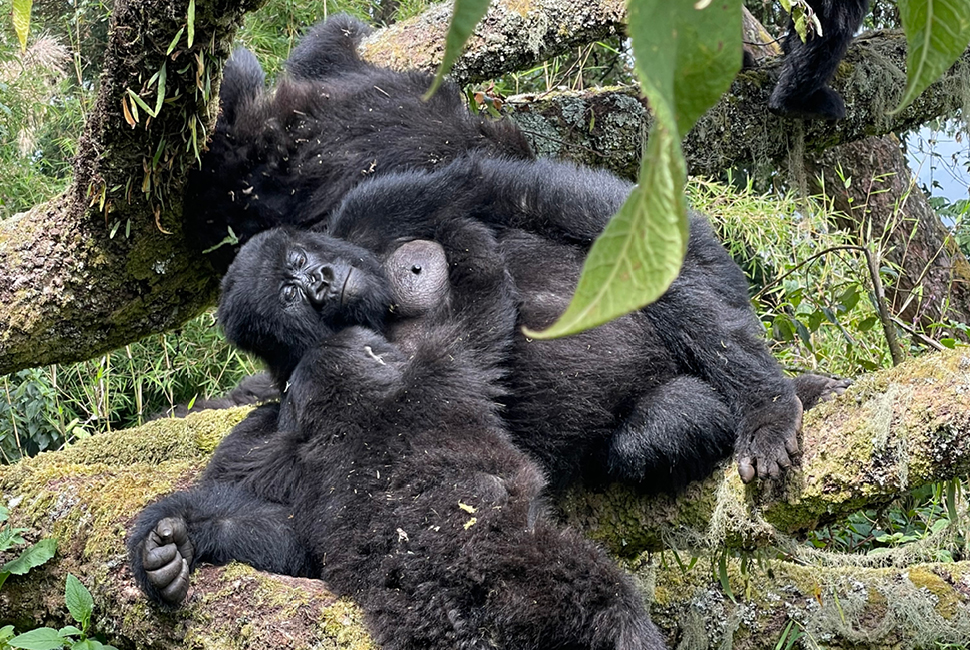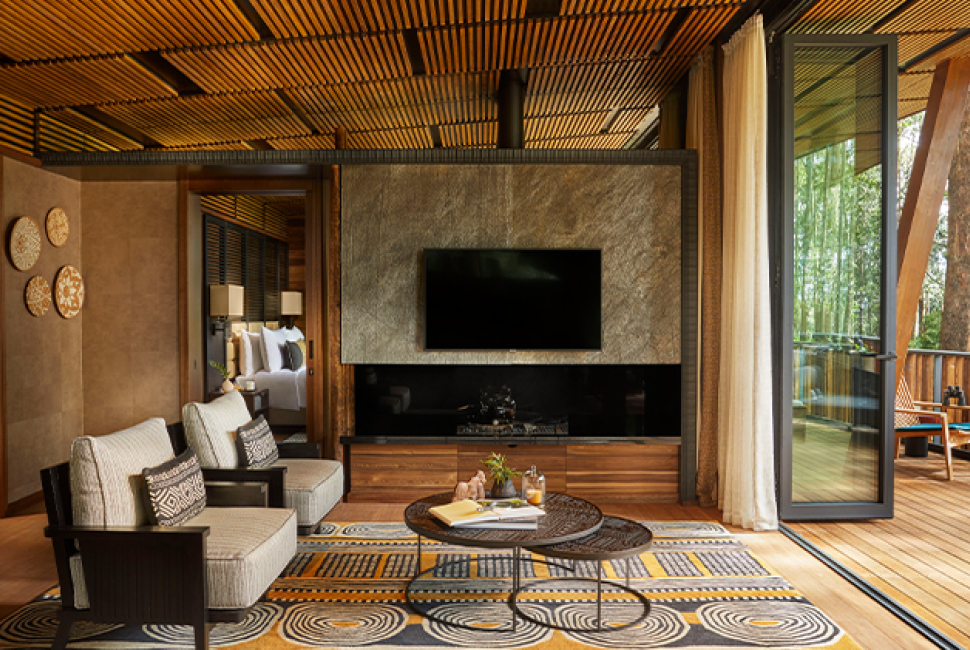

When I told friends I was heading to Rwanda, I was surprised by their reaction. “So, you’re going to fist-bump gorillas?” they asked. Their response turned out to be rather accurate.
The central African country has made remarkable changes following its brutal 1994 genocide, in part due to the tourists eager to see the famed mountain gorillas within fist-bumping distance.
Rwanda’s mountain gorillas, made famous by primatologist Dian Fossey, live primarily in the north of the country within Volcanoes National Park. About 10 habituated gorilla families who call the park home are carefully protected; only 80 trekking permits (issued solely by the government or licensed tour operators at $1,500 a person) are available each day, making them highly coveted.
The planning for the one-day gorilla trek can feel chaotic, and you know little (Which family will I visit? What will the hike be like?) in advance. I arrived at the park headquarters at 7 a.m. along with the day’s other permit holders (you must be a minimum of 15 years old). We milled about, adjusting our gaiters and exchanging countries of origin while the eight guides divided us up (likely by presumed fitness level) and assigned the newly formed groups to gorilla families. With the gorillas spread across the 62-square-mile park, treks to reach them vary in difficulty, from a brisk 30 minutes to a daunting four hours.

My group of 10 trekkers — a mix of French, American, Dutch, German and South African tourists all roughly in their 30s — was deemed fit enough to visit the Igisha family of gorillas high up in the mountainous jungle. This necessitated an hour’s drive from park headquarters to a trailhead, where we each handed off our backpacks to porters (portering is the country’s answer to fighting poaching — the $20 tip from each trekker is enough to keep the practice at bay). After our guide provided a quick overview of the plan and handed out trekking poles, we began the upward climb to meet the 34 members of the Igisha family.
The trek was hard, like reconsidering-my-desire-to-see-gorillas hard. I received many a sympathetic look from the seasoned porters as I huffed up the mountain, forcefully planting my trekking poles, hoping they would help pull me up the steep incline. After two hours of brutal ascent, we finally reached our goal: the trackers who went out at dawn to find the Igisha family linked up with us and said the gorillas were nearby. We were instructed to mask up and follow the machete-wielding trackers off-piste into the thick jungle, crashing over brush and through stinging nettles.
Mere moments after I questioned whether the trek was worth it, I was face-to-face with a mother mountain gorilla gently breastfeeding her baby. It was breathtaking. For an hour, we watched various Igisha family members, from babies to silverbacks, as they napped, snacked and, in one tense moment, charged at us (the guide’s clipped instruction of “Do not run” as the silverback hurtled toward us was hard to obey).
The time went by quickly as we observed the gorillas in their natural environment, snapping picture after picture in quiet awe. Nothing prepared me for the simple yet intense encounter.
The hike back down — a much more manageable 30 minutes — was conducted in silence as the group contemplated the trek, coming to the same unspoken conclusion: this was a once-in-a-lifetime experience.

Where to Stay
One&Only Gorilla’s Nest was a wonderful base to launch my Volcanoes National Park trek. Although the staff cannot book your permit directly, it goes above and beyond when it comes to preparing you for the adventure — expect a robust packed lunch; complimentary gaiters, backpacks and hats; and a bottle of champagne waiting for you upon your return. A bonus: after the trek, the staff rounds up your muddied clothes and shoes for a quick cleaning, so you don’t have to worry about stowing the dirty items in your luggage.
